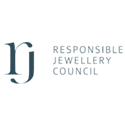Introduction to the Global Gold Market
The allure of gold has endured through the ages, not just as a symbol of wealth and power, but also as a critical component in various industries. In recent years, the global gold market has witnessed a significant shift, with emerging markets playing an increasingly vital role. This blog delves into the dynamics of these burgeoning markets and their impact on the global gold landscape.
Emergence of New Key Players in Gold Production and Trade
New Frontiers in Gold Mining
The global gold mining landscape is witnessing a significant shift as new regions emerge as key players, altering the traditional dynamics of gold production and trade. This change is most notable in Sub-Saharan Africa and Latin America, regions that have been historically underexplored but are now coming to the forefront.
Sub-Saharan Africa: A Gold Mining Powerhouse
Shane McLendon / New gold mining projects
Ghana: Often referred to as the “Gold Coast,” Ghana has risen to become Africa’s top gold producer. The combination of rich deposits, favorable government policies, and investments in mining infrastructure has catalyzed this growth. Recent discoveries in regions like Ashanti and Western Ghana highlight the country’s untapped potential.
Burkina Faso: Despite facing socio-political challenges, Burkina Faso has seen a remarkable increase in gold production. The country’s mining sector has attracted international investment, with new mines opening in regions like Houndé and Mana.
Tanzania: Tanzania’s gold mining industry benefits from large-scale projects like the North Mara and Geita mines. The government’s efforts to regulate and support the sector have spurred growth, making it a significant player in East Africa.
Latin America: The New Frontier
Peru: Peru remains a powerhouse in Latin American gold production, with significant activities in regions like Cajamarca and Puno. The country’s rich geological landscape, coupled with a mature mining industry, positions it as a key global player.
Ecuador: Once overshadowed by its neighbors, Ecuador is emerging as a significant gold mining destination. The country is attracting global attention with large-scale projects like Fruta del Norte, signaling a new era for its mining industry.
These regions represent a new chapter in the gold mining narrative, marked by a combination of rich untapped resources, evolving government policies, and increasing global investment. The rise of these new frontiers in gold mining not only diversifies the global gold supply but also brings economic growth and development opportunities to these areas.
Growing Consumer Markets
The landscape of gold consumption is witnessing a remarkable shift, particularly in Asia, where both traditional and emerging markets are demonstrating an insatiable appetite for gold. This section explores these dynamic markets, underscoring their growing influence on the global stage.
Asia’s Rising Demand
China and India: Cultural and Economic Drivers
China: As the world’s largest consumer of gold, China’s appetite for gold is fueled by its economic prowess and deep-rooted cultural affinity towards gold. Gold is not only a popular form of investment but also an integral part of social and cultural events, like weddings and festivals.
India: Similarly, in India, gold is deeply embedded in the cultural fabric. It is a symbol of wealth and prosperity, extensively used in jewelry and as a form of savings. The Indian wedding season significantly spikes the demand for gold, influencing global prices.
Southeast Asia: The New Frontier
Vietnam: In Vietnam, gold is deeply entwined with both culture and the economy. The country has seen a surge in gold investment and jewelry consumption, driven by economic growth and increasing disposable incomes.
Indonesia: Indonesia’s growing middle class has led to a heightened demand for gold, primarily for investment purposes. The Indonesian market is becoming more sophisticated, with a growing interest in gold investment products.
Shift in Consumer Behaviour
Investment vs. Ornamentation: Unlike in the West, where gold is primarily seen as an investment commodity, in many Asian countries, gold’s ornamental value is equally significant. However, there is a noticeable shift, with newer generations balancing between viewing gold as an investment and an adornment.
Digital Gold Platforms: The rise of fintech in these regions has led to the emergence of digital platforms for gold trading and investment, making gold more accessible to the younger, tech-savvy generation.
Government Policies and Economic Factors
Import Duties and Taxation: Government policies, such as import duties in India, play a crucial role in shaping gold demand. Fluctuations in these policies can significantly impact local prices and consumption patterns.
Economic Stability: In times of economic uncertainty, gold often becomes a safe-haven asset in these regions, further spurring demand.
Factors Driving Growth in Emerging Gold Markets
Economic Growth and Increasing Wealth
The surge in gold mining and consumption in emerging markets is intrinsically linked to their economic growth and increasing wealth. This phenomenon is not merely a reflection of the rising gold prices but also a testament to the deeper economic transformations occurring in these regions.
Economic Development and Gold Demand
Rising Middle Class: In countries like China and India, the expanding middle class is a key driver of gold demand. As disposable incomes rise, so does the inclination towards gold as an investment and a status symbol.
Industrial Growth: Economic development brings with it an increase in industrial activities where gold is a crucial component, particularly in electronics and medical devices. This industrial demand complements the traditional consumer demand for gold.
Gold as an Investment
Hedge Against Inflation: In many emerging economies, gold is seen as a safe haven against inflation and currency fluctuations. This perception is strengthened in times of economic uncertainty, leading to increased investment in gold.
Diversification of Investment Portfolios: With the growth in wealth, individuals and institutional investors in these regions are diversifying their investment portfolios, with gold often being a preferred component due to its perceived stability and potential for appreciation.
Impact of Technological Advancements
Digital Gold Platforms: The advent of digital platforms for buying and selling gold has made it more accessible to a broader audience in these markets. This ease of access is facilitating the growth of gold investment among a more tech-savvy generation.
Innovative Financial Products: Emerging markets are witnessing a rise in innovative financial products related to gold, such as gold-backed ETFs and digital gold currencies. These products are attracting a new wave of investors who are looking for modern ways to invest in this age-old asset.
Government Policies and Initiatives
Favorable Policies: In many of these countries, government policies are increasingly favorable towards gold mining and investment. For instance, reduced import tariffs in India and supportive mining policies in African nations are catalyzing the growth of their respective gold markets.
National Gold Reserves: Central banks in emerging economies are also contributing to the demand by increasing their gold reserves as a part of their foreign exchange strategy, thus underscoring their belief in gold as a key economic asset.
Geopolitical Shifts
Global Trade Policies and Regional Alliances
Nathan Cima / There are major shifts in trade right now
The geopolitical landscape plays a critical role in shaping the gold industry, especially in emerging markets. Recent years have seen a shift in global trade policies, which significantly affects the gold trade.
Relaxation of Trade Barriers: Some countries have reduced barriers to trade, allowing easier access to gold markets. This has enabled nations rich in gold reserves to export more efficiently to high-demand regions, thus accelerating their entry into the global gold market.
New Trade Agreements: The establishment of regional trade agreements, such as the African Continental Free Trade Area (AfCFTA), opens up intra-continental gold trade, fostering growth in local markets. Such agreements not only boost the gold industry within member countries but also attract foreign investment.
Impact of Sanctions: Conversely, geopolitical tensions leading to sanctions can disrupt traditional gold supply chains. This has prompted the search for alternative sources, bringing emerging markets into sharper focus as potential gold suppliers.
Shifts in Global Alliances
East-West Dynamics: The shifting balance of power between Western countries and emerging economies in Asia and Africa is reshaping global alliances. As countries like China and India increase their influence, they forge new partnerships with gold-rich countries in Africa and Latin America, creating new opportunities for gold exploration and trade.
Infrastructure Investments: Investment in infrastructure by major powers in these emerging markets, such as China’s Belt and Road Initiative, has a dual effect. It aids in the extraction and transport of gold and strengthens economic ties, thereby influencing gold trade routes and partnerships.
Political Stability and Regulatory Changes
Stable Governments Attracting Investment: Political stability in previously turbulent regions has led to increased foreign investment in gold mining. Investors are more willing to engage with markets where there is a lower risk of political upheaval disrupting operations.
Regulatory Environment: Changes in a country’s regulatory framework regarding mining can either attract or deter foreign investment. Countries that have streamlined their mining regulations and offered incentives have seen a boost in their gold mining sectors.
Technological and Infrastructural Developments
The rise of emerging markets in the global gold industry is significantly bolstered by advancements in technology and infrastructure. These developments not only enhance mining efficiency but also make it feasible to explore and extract gold from previously inaccessible or unviable locations.
Advanced Mining Technologies
Automated and Remote-Controlled Machinery: The adoption of automated drilling and excavation equipment, operated remotely, has revolutionized gold mining. This technology increases safety by reducing the need for manual labor in hazardous mining conditions.
Sophisticated Ore Processing: Newer processing technologies, such as bioleaching and pressure oxidation, are being employed. These methods allow for the extraction of gold from low-grade ores that were previously considered unprofitable, thereby expanding the potential of mining operations.
Enhanced Exploration Techniques
Aerial Surveys and Geospatial Data: Utilization of drones and satellite imagery for aerial surveys has dramatically improved the accuracy of geological mapping. These tools enable miners to pinpoint gold deposits with greater precision, reducing environmental disruption and increasing the likelihood of successful extraction.
Geophysical and Geochemical Advances: Innovative geophysical exploration techniques, like seismic, magnetic, and electrical resistivity surveys, coupled with advanced geochemical analysis, have made it possible to detect gold deposits deep underground, opening up new mining frontiers.
Improved Infrastructure
Jared Murray / Infrastructure expansion is happening across the emerging markets of the world
Enhanced Transportation and Logistics: Investments in transportation infrastructure, such as roads, railways, and ports, facilitate more efficient movement of gold ore and refined gold. This improvement is vital for remote mining areas, enabling them to connect to global markets.
Energy and Water Management: Emerging gold markets are increasingly implementing energy-efficient solutions and sustainable water management systems in mining operations. This shift not only reduces operational costs but also minimizes the environmental footprint of gold mining.
Digital Transformation in the Gold Industry
Data Analytics and Machine Learning: The integration of data analytics and machine learning in mining operations optimizes the entire value chain. From predictive maintenance of equipment to analyzing market trends for better decision-making, these technologies offer a competitive edge.
Blockchain for Traceability and Transparency: Blockchain technology is being explored for its potential to track the journey of gold from mine to market. This approach enhances transparency in the supply chain and ensures compliance with ethical sourcing standards.
Future Predictions for Gold in Emerging Markets
The transformation within the gold industry, particularly in emerging markets, is not just a fleeting trend but a significant shift that carries profound implications for the future. Here are some key predictions and trends we can expect to see:
Sustainable and Responsible Mining Practices
Increased Environmental Awareness: As awareness of environmental issues grows globally, emerging markets are adopting more eco-friendly mining practices. This includes reducing the ecological footprint of mining operations, using less water, and minimizing carbon emissions.
Community Engagement and Development: Mining companies are increasingly engaging with local communities, focusing on creating sustainable economic opportunities and improving living standards. This includes investing in education, healthcare, and infrastructure.
Technological Innovations: Advancements in technology are enabling safer, more efficient mining operations. For example, the use of AI and machine learning for mineral exploration and drone technology for surveying mining sites reduces environmental disruption.
Innovation in Gold Usage
New Industrial Applications: Gold’s conductive properties make it invaluable in electronics, and as technology evolves, new applications are likely to emerge. For example, gold nanoparticles have potential uses in healthcare, such as targeted drug delivery systems.
Green Technology Contributions: Emerging markets might lead innovations in using gold in green technologies. For instance, gold catalysts are being researched for their potential in pollution control and renewable energy solutions.
The gold industry is standing at the threshold of a new era, with emerging markets poised to reshape the global landscape of gold production and consumption. Understanding these changes is crucial for industry stakeholders and investors alike to navigate this golden rush effectively.
Recent articles
The Tech Revolution: Gold’s Role in Modern Technology
A Week of Major Developments in gold















